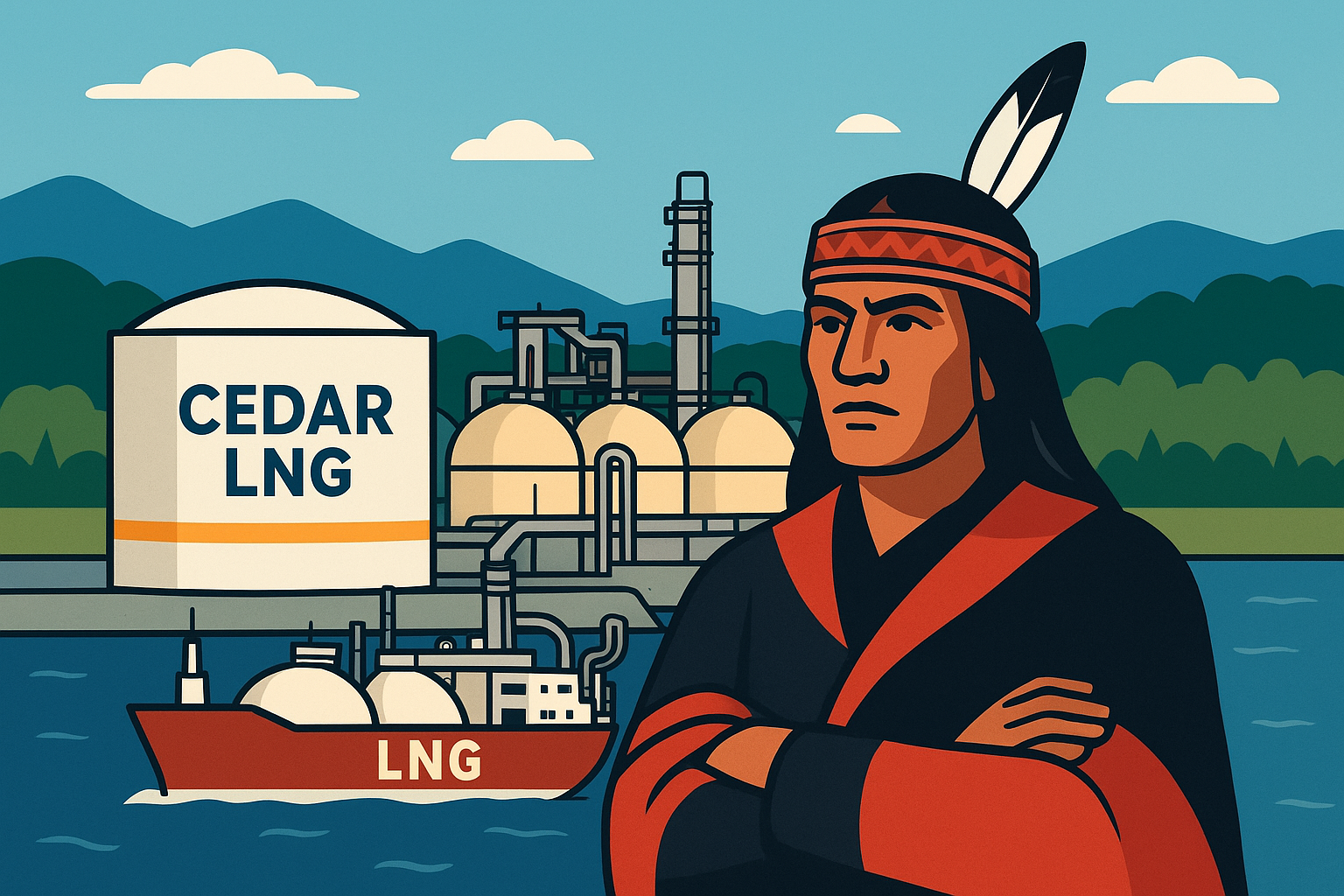Canada’s energy sector has just witnessed a landmark development that could redefine how major infrastructure projects are financed and operated. The Haisla Nation, an Indigenous community in British Columbia, has secured 50.1% ownership in the $4 billion Cedar LNG project near Kitimat, making it the world’s first majority Indigenous-owned LNG export facility. The remainder of the project is held by Pembina Pipeline Corporation (TSE: PPL). Operations are slated to begin in 2028.
This shift signals not only a milestone in Indigenous participation in resource development but also a new model of project ownership that could reshape risk assessment, financing, and investor strategy in Canada’s energy sector.
LNG’s Growing Role in Global Energy
Liquefied Natural Gas (LNG) continues to grow as a bridge fuel in the global transition toward cleaner energy. According to the International Energy Agency (IEA), global LNG demand is projected to expand by over 25% by 2030, with Asia leading the import growth. Canada’s west coast, with its proximity to Asian markets, is positioned as a competitive supplier.
The Cedar LNG project aims to tap into this demand by exporting up to 3 million tonnes of LNG annually. This capacity could make it a meaningful player in global LNG flows, while boosting Canada’s role in supplying energy security to Asian buyers looking to diversify away from Russian gas.
Why This Matters for Investors
For investors, the Haisla Nation’s majority ownership introduces both unique opportunities and risks:
- Social License Advantage: Indigenous ownership reduces the likelihood of project delays due to local opposition. Projects with Indigenous equity stakes tend to face fewer legal and regulatory hurdles, a factor often underestimated in risk assessments.
- Financing & Structure: At $4 billion, Cedar LNG is a large-scale project. Indigenous participation backed by strong financial partners like Pembina Pipeline could create new models for capital structuring, potentially supported by government funding and green financing instruments.
- Market Timing: With LNG prices expected to remain robust amid ongoing energy security concerns, the project is strategically timed for market entry around 2028.
However, risks remain: capital overruns in large infrastructure projects are common, and global LNG markets are cyclical. Additionally, Indigenous-majority ownership may bring new governance dynamics and expectations around community reinvestment that could affect profit margins.
Analyst & Market Perspectives
Reuters notes this is the first time globally that an LNG export project has been majority Indigenous-owned, underscoring its symbolic and practical importance. Analysts from RBC Capital Markets suggest that Indigenous partnerships could become a competitive differentiator for Canadian projects, offering a “social acceptance premium” compared to projects elsewhere that face heavy opposition.
Bloomberg highlights that Pembina Pipeline, already a significant midstream operator, benefits from diversified exposure by sharing ownership risk with a local partner. For investors in Pembina (TSE: PPL; NYSE: PBA), the deal may enhance long-term cash flow stability, provided execution remains on track.
Future Trends to Watch
- Indigenous Equity in Energy: Expect more large-scale projects across oil, gas, and renewables to include Indigenous equity stakes. This could reshape Canada’s infrastructure investment landscape.
- North American LNG Expansion: With U.S. Gulf Coast LNG capacity rapidly growing, Canada’s west coast projects offer geographic diversification. Investors should monitor whether Cedar LNG can secure long-term supply contracts with Asian utilities.
- Carbon Footprint Pressure: LNG projects face rising scrutiny over emissions. Cedar LNG’s use of hydroelectric power for liquefaction may give it an ESG advantage compared to higher-emission competitors.
- Capital Access: If Cedar LNG succeeds, it may open new channels for Indigenous groups to access both private and institutional capital for large-scale ventures.
Key Investment Insight
The Haisla Nation’s majority stake in Cedar LNG reflects a broader transformation in how Canada develops its natural resources. For investors, this means two things: first, Indigenous partnerships may become a de-risking factor in project execution; and second, LNG remains a strategic growth sector with potential for strong long-term returns.
Investors with exposure to Pembina Pipeline (TSE: PPL; NYSE: PBA) and broader Canadian LNG infrastructure should view Cedar LNG as a high-profile test case for the future of Indigenous-led energy development. Monitoring project financing, construction progress, and long-term offtake agreements will be key to assessing upside potential.
Stay Ahead with MoneyNews.Today
The Cedar LNG deal is more than just a $4 billion project—it’s a signal that Canada’s resource economy is evolving, with Indigenous equity at the center. For investors, this development offers a new lens to evaluate opportunity and risk in the energy sector.
Stay with MoneyNews.Today for trusted daily insights into the global trends shaping tomorrow’s markets.





